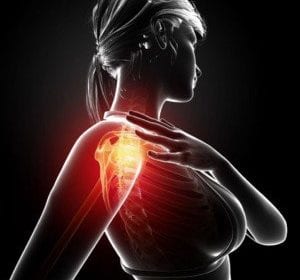Is Plastic Compromising Your Health?
By Kevin Masson MSc, CSCS, CPT, USAW, FMS
When you walk into any supermarket or convenience store these days, you are confronted by shelf upon shelf of food and drinks in plastic containers. What you may not be aware of is the potential damage that can be caused to your body.
So what is plastic doing to your body? Why the fuss about drinking from plastic bottles and if they were that harmful, wouldn’t the FDA have something to say about it? The fact is that BPA-Free and FDA approved logo are used by manufactures for marketing purposes to act like their products are safe to use, but the confusion remains, is it really? Here is what we will cover in this article:
- BPA and BPS (BPA-free) have a lot more similarity then what the FDA makes you think.
- 81% of Americans have detectable levels of BPS in their urine.
- Did you know that the chemicals released from BPA might stop you from getting pregnant? Or that it may be responsible for premature birth?
- You may be inadvertently increasing your risk of cancer by refilling plastic bottles.
- Bottled water may contribute toward heart disease and other chronic diseases.
- We all know about the effect of plastic on the environment. Isn’t it time we took part in cleaning up the mess by refusing plastic?
- So what to do about it? What are the other options?
That’s what I am here to report because unless you know the facts, it’s unlikely that an article on plastic bottles and containers is actually going to persuade you that you should change your ways.
I wrote this article not to scare you, but it is time to face up to the fact that the average person is totally unaware of what he or she is doing to their body by participating in something they consider healthy.
We are all encouraged to drink water and lots of it, so if you don’t get it in a plastic bottle, where’s the best place to get water you can trust? Meal prepping is a ritual of mine and a lot of other health-conscious consumers but eating in plastic containers may be counter-productive to what we are trying to achieve by prepping our meals.
One of the most common materials used in our everyday lives is plastic, and that sort of commonality should be examined for potential benefits or potential dangers. There is a chemical found in almost all plastics called Bisphenol A or BPA which has been linked to numerous health problems, and yes it can leach into your water and food.
You see water is commonly known as a universal solvent, which means that it dissolves and attracts other molecules. When water is in a plastic bottle, and you add heat to the equation, some of the plastic molecules will get mixed with the water molecules. We all heard this before “Don’t drink from the water bottle you left in the car.” I know you drank that water before; you remember how bad that taste was? Literally like drinking plastic, yep that’s because you literally did drink plastic.
What Is BPA and Why is it bad?
BPA is an industrial chemical that has been used to make certain plastics and resins since the 1960s. BPA is so popular because it enhances the strength of plastic and helps prevent CDs from becoming easily shattered or the metal of a can corrode into the food. Pretty much it’s used to make products stronger. The chemical is added to many products from hygiene and beauty, to baby products and formula, to Tupperware and to-go cup, even the lining of canned goods. Surely something so common amongst our homes and markets must be safe, right?
Bisphenol A is an endocrine disruptor which imitates a human body’s hormones and will disrupt the productions and functions of natural hormones, including eliminating them altogether. According to research from the University of Oxford, it behaves in the body in a similar way as estrogen does, messing up with puberty, ovulation, infertility, erectile dysfunction and sexual drive.
Since BPA primarily imitates estrogen, it should come as no surprise that it has been linked to breast and prostate cancer as well as hindering chemotherapy and other cancer treatments. In the various literature produced around BPA ingestion, it has been linked to a myriad of heart conditions like hypertension, angina, and heart disease. Also, there has been evidence that BPA contributes to insulin resistance and thereby making type 2 diabetes more difficult to treat.
We know that there is an obesity problem at the moment and it is partially due to people not being educated on health and wellness, but BPA has been linked to being overweight as well. Several studies published report that those, including children, who were at risk for obesity or were obese, had BPA levels ranging from 47-85% more than their normal-weight counterparts. It should be noted that while BPA has been linked to harming fetal development, it has only been linked to child weight gain in the womb via animal testing rather than people. So, it may not cause a predisposition for obesity in children.
Among the risk of maintaining a healthy weight, hormone function, and heart disease, BPA has been found to cause a 29% increase in abnormal liver function, 91% increase in premature delivery and asthma in infants. Remember that these links have been researched since the 1980s and that is why so many companies now offer BPA free products. These are links and not causation, but ask yourself, if these links between illness and Bisphenol A have been continuously demonstrated for over nearly forty years, should we still trust plastic?
What is BPA free
BPA-free is the name given to the other chemicals that are replacing BPA, the most popular of them is referred as BPS or Bisphenol-S. BPS was a favored replacement because it was thought to be more resistant to leaching. If people consumed less of the chemical, the idea went, it would not cause any or only minimal harm.
Yet BPS is getting out. Nearly 81 percent of Americans have detectable levels of BPS in their urine. And once it enters the body, it can affect cells in ways that parallel BPA. A 2013 study by Cheryl Watson at The University of Texas Medical Branch at Galveston found that even picomolar concentrations (less than one part per trillion) of BPS can disrupt a cell’s normal functioning, which could potentially lead to metabolic disorders such as diabetes and obesity, asthma, birth defects or even cancer. BPS also mimics the form and function of estrogen, therein can bind to receptors and disrupt growth, cell repair, energy levels, reproduction, even the development of a fetus.
Another research by Deborah Kurrasch, from the University of Calgary, turned to zebrafish to study the effects of BPS on embryo development. Zebrafish brain development is similar to human but easier to track as it is in an invisible layer. When the fish were dosed with BPS in similar concentrations to that found in a nearby river, neuronal growth exploded, rising 170 percent for fish exposed to BPA and a whopping 240 percent for those exposed to BPS. As the fish aged, they began zipping around their tank much faster and more erratically than the unexposed fish. The researchers concluded that increased neural growth likely lead to hyperactivity. This is very common in children with ADD or ADHD.
In another study, Hong-Sheng Wang, an associate professor at the University of Cincinnati, found that both BPA and BPS cause heart arrhythmia in rats. He tested almost 50 rats, giving them the chemicals in doses akin to concentrations found in humans. Even at such low concentrations, the rats’ hearts began to race, but curiously only those of the females. They discovered that BPS blocked an estrogen receptor found only in female rats, which lead to the disruption of calcium channels, a common cause of heart arrhythmia in humans.
These in vivo studies agree with in vitro studies claiming that BPS is a hazard. But the problem doesn’t stop with removing bisphenol S from the market as was done for bisphenol A. The problem, according to Kurrasch, lies in the lack of industry regulation. Currently, no federal agency tests the toxicity of new materials before they are allowed on the market. “We’re paying a premium for a ‘safer’ product that isn’t even safer,” Kurrasch says. There are many types of bisphenols out there, so part of the public’s responsibility “is making sure that big corporations don’t just go from BPA to BPS to BPF or whatever the next one is.”
Why is it FDA Approved then?
In 2012, the FDA (U.S Food and Drug Administration) banned BPA from certain products such as baby food and baby food packaging, but BPA-Free products generally referred to as BPS is perfectly associated with the FDA approved logo, why is that?
Well, you see the FDA approval logo means that the FDA has decided the benefits of the approved item outweigh the potential risks for the item’s planned use. In other words, if you are to choose between “bad” and “worst,” you would choose the lesser of two evils. This does not mean that they are safe, it means that option 2 (BPA-Free) is better than option 1 (BPA) although both have shown to be detrimental to our health.
Impact on our environment
So what are plastic bottles doing to the environment? If they are that harmful for drinking from, what good are they? The fact is that even recyclable plastic bottles that are provided for the provision of water are not being recycled responsibly. Most people who buy them merely put them into their waste in the US and in a study by Augsburg University, the troubling aspect seemed to be the lack of education when it comes to recycling those products that are made to be recycled.
How much energy does it use to produce and transport bottled water? Well, you may be surprised to know that it takes 2000 times the amount of energy that could be put into ensuring that the water from your tap is safe thus imposing more energy use on the world than is necessary. The report by the Augsburg University concludes that the more we rely upon bottled water, the more the impact on the earth we live in. The amount of petroleum needed to be drilled in order to produce even PET plastic is unacceptable.
While we are still in the environmental aspect of this article, I have to talk about the vast amount of plastic found in our oceans. You can literally make a new continent made out of plastic found in the ocean, there is that much. This article is not about saving the environment but to make you reflect on something that you already know and increase your knowledge to become mindful consumers. I am sure you have all seen images of animals dying from plastic, turtles with plastic straws in their nose or birds full of plastic in their stomach and the list goes on.
You may have heard that big corporations such as Starbucks are now stopping their use of plastic straws, which is a good start but we need to do better than that. We only have one earth, and if we carry on the way we do, we are leaving quite a mess for our children generations.
Alternatives to plastic
With all the dangers linked to BPA products, how can you avoid them? The easiest way is to read the product information and see what it contains. As mentioned earlier, many companies have decided to produce BPA-free products and use BPS (Bisphenol S) or BPF (Bisphenol F). These chemicals are nearly identical to BPA and have been found to behave just like it. These chemicals are still being researched in order to find out if they are as dangerous as Bisphenol A. It isn’t too much of a stretch to worry about these chemicals since we do know, for a fact, that BPF and BPS are almost identical to BPA. If it quacks like a duck and looks like a duck, it probably is a duck.
If so many products contain BPA, how do you avoid them? Well, BPA is present in the environment as well and so entirely avoiding it is impossible, but there are ways to minimize your exposure to it. You can avoid foods packaged in plastic or cans. You’ll want to look out for recycling numbers 1, 3,6,7, or the letters PC as they will clue you that they are polycarbonate and the use of BPA. You’ll also want to start drinking from glass bottles or stainless steel rather than plastic ones, and yes they make glass baby bottles.
With children’s toys, you’ll want to be very sure that they are BPA-free as so many toys are chewed or sucked on with kids. Heat also helps BPA leach into foods, so be sure not to throw a plastic container in a microwave. In general, avoid plastic containers to store your food. Many bodybuilders and gym goers food prep in plastic food containers, this is the worst thing you can do, instead, use glass food containers.
Having a filter on your water at home and having it tested regularly is a good idea and I would suggest that you decide upon the filter that you need based on lab results on your own water supply. Installing a reverse osmosis filtration system in your home is one of the best ways to make sure that the water you are drinking is free from toxic substances. Use this table provided to help you to decide which filter will give you the purest form of water within your own home. Continue to drink water, but become less dependent upon water in plastic bottles. Even if you find the glass bottles to be a little more expensive, they are a healthier alternative. If you do invest in an at home filtration system reusing and filling your own glass or stainless steel bottles at home before you leave can be a cost saving alternative in the long run and you have piece of mind that the water you are drinking is of no detriment to your health.
If you are lucky to live next to natural spring water well then use it! It’s free! Use this website https://www.findaspring.com to find out if you have one near you.
These are just a few ways to reduce the levels of BPA in your body and improve your overall health. Many of the studies focused on the levels of BPA in a person as its presence in the body is unavoidable.
Conclusion
Like I stated above, this article is not meant to scare you or create a phobia about plastic, but simply to create awareness and educate on what you’re putting in your body, and try to control your health as much as possible. Some things are just unavoidable and so don’t panic if you drink from a BPA bottle every so often, you can only minimize risk but never eliminate it. So, when out and about shopping take some time to read what you’re buying, make sure the water bottles are made of glass. Don’t buy plastic food containers, instead prep in glass containers, IKEA sells them for $2.99. Get yourself a good tap water home filtration system that will get rid of a lot of the crap that is in tap water and if you are on the go, use stainless steel or glass bottles.
Take control of your body and decide, as much as possible, what you want in there.
Take Away Points
- BPA is a chemical used to strengthen plastic and helps preserve can food.
- BPA primarily imitates estrogen in the body and is linked to breast and prostate cancer, heart disease, type 2 diabetic, premature birth, erectile dysfunction, low sex drive and other hormonal imbalances.
- BPA-Free is also known commonly as BPS and has many (too many) molecular similarities with BPA.
- The FDA approves BPA-Free because it is safer than BPA, even though both products have peer review research that shows detrimental health factors.
- Plastic is not only detrimental to our health but to our environment, and people are unaware of how to recycle it properly.
- You know it is BPA plastic or recycled BPA when there is a number 1, 3, 6 or 7 or the letters PC under the container or bottle you are using.
- We cannot get rid of plastic, it’s all around us, but we can lower the amount we ingest.
- Drink from Glass or stainless steel bottles
- Prep food in glass containers, plastic containers mixed with heat from microwave I call that an estrogen party
References
Jenny L. Carwile et al, “Polycarbonate Bottle Use and Urinary Bisphenol A Concentrations,” Environmental Health Perspectives 117:1368-1372, 12 May 2009.
Centers for Disease Control and Prevention, “Factsheet Bisphenol A (BPA)”, accessed at https://www.cdc.gov/biomonitoring/BisphenolA_FactSheet.html, on 24 July 2012.
American Plastics Council, Questions and Answers about BPA, downloaded from www.bisphenol A.org on 14 April 2004; Wilding et al, The National Workgroup for Safe Markets, No Silver Lining: An Investigation into Bisphenol A in Canned Foods, May 2010. Available at ej4all.contaminatedwithoutconsent/downloads/NoSilverLining-Report.pdf.
Barrett, J. R. (2009, February). Trumped treatment? BPA blocks effects of breast cancer chemotherapy drugs. Environmental Health Perspectives 1172, A75. Retrieved from https://www.ncbi.nlm.nih.gov/pmc/articles/PMC2649250/
Bisphenol A (BPA). (2010, August). Retrieved from https://www.niehs.nih.gov/health/assets/docs_a_e/bisphenol_a_bpa_508.pdf
Carwile, J. L., Luu, H. T., Bassett, L. S., Driscoll, D. A., Yuan, C., Chang, J. Y., …Michels, K. B. (2009, May). Polycarbonate bottle use and urinary bisphenol A concentrations. Environmental Health Perspectives 1179, 1368-1372. Retrieved from https://www.ncbi.nlm.nih.gov/pmc/articles/PMC2737011/
Centers for Disease Control and Prevention (CDC). (2016, December 23). Bisphenol A (BPA) [Fact sheet]. Retrieved from https://www.cdc.gov/biomonitoring/bisphenola_factsheet.html
Diabetes and the environment. (n.d.). Retrieved from https://www.diabetesandenvironment.org/home/contam/bpa
Gao, H., Yang, B.-J., Li, N., Feng, L.-M., Shi, X.-Y., Zhao, W.-H., & Liu, S.-J. (2015, January 9). Bisphenol A and hormone-associated cancers: Current progress and perspectives. Medicine (Baltimore) 941, e211. Retrieved from https://www.ncbi.nlm.nih.gov/pmc/articles/PMC4602822/
Gao, X., & Wang, H.-S. (2014, August 15). Impact of bisphenol A on the cardiovascular system — epidemiological and experimental evidence and molecular mechanisms. International Journal of Environmental Research and Public Health 118, 8399-8413. Retrieved from https://www.ncbi.nlm.nih.gov/pmc/articles/PMC4143868/
Huo, X., Chen, D., He, Y., Zhu, W., Zhou, W., & Zhang, J. (2015, September). Bisphenol-A and female infertility: A possible role of gene-environment interactions. International Journal of Environmental Research and Public Health 129, 11101-11116. Retrieved from https://www.ncbi.nlm.nih.gov/pmc/articles/PMC4586663/
Li, D., Zhou, Z., Qing, D., He, Y., Wu, T., Miao, M., …Yuan, W. (2009). Occupational exposure to bisphenol-A (BPA) and the risk of self-reported male sexual dysfunction. Human Reproduction 00, 1-9. Retrieved from https://www.oxfordjournals.org/news/dep381.pdf
Machtinger, R., Combelles, C. M. H., Missmer, S. A., Correia, K. F., Williams, P., Hauser, R., & Rocowsy, C. (2013, October 5). Bisphenol-A and human oocyte maturation in vitro. Human Reproduction 2810, 2735-2745. Retrieved from https://www.ncbi.nlm.nih.gov/pubmed/23904465
Toxicological and health aspects of bisphenol A. (2010, November). Retrieved from https://apps.who.int/iris/bitstream/10665/44624/1/97892141564274_eng.pdf?ua=1
Wolstenholme, J. T., Rissman, E. F., Connelly, J. J. (2011, March). The role of bisphenol A in shaping the brain, epigenome, and behaviour. Hormones and Behavior 593, 296-305. Retrieved from https://www.ncbi.nlm.nih.gov/pmc/articles/PMC3725332/
Xie, M. Y.,. Ni, H., Zhao, D. S., Wen, L. Y.1, Li, K.S.1, Yang, H. H., … Su, H. (2016 October). Exposure to bisphenol A and the development of asthma: A systematic review of cohort studies. Reproductive Toxicology 65, 224-229. Retrieved from https://www.ncbi.nlm.nih.gov/pubmed/27542534





























